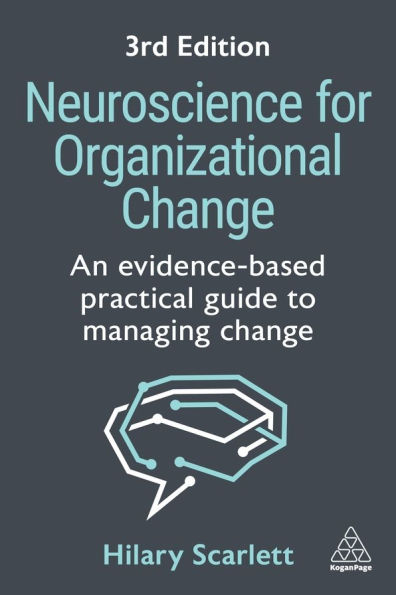Neuroscience for Organizational Change: An Evidence-based Practical Guide to Managing Change
Organizational change can be unpredictable and stressful. With a better understanding of what our brains need to focus, organizations can increase employee engagement, productivity and well-being to successfully manage periods of uncertainty.
Drawing on the latest scientific research, Neuroscience for Organizational Change explores the need for social connection at work, how best to manage emotions and reduce bias in decision-making and why we need communication, involvement and collaboration to help us through change.
Practical tips and reflections can be found throughout, as well as examples of how these insights have been applied at organizations such as Lloyds Banking Group and PepsiCo. The book also sets out a science-based planning model, SPACES, to enhance engagement.
This updated edition of Neuroscience for Organizational Change contains a new chapter on Neurodiversity and Change for organizations as they become aware of the need to create an environment where all employees can perform at their best. It also features revised content reflecting the latest insights and developments in AI, and updated real world examples, giving a long-term view of the benefits of applying neuroscience in organizations.
1122720676
Drawing on the latest scientific research, Neuroscience for Organizational Change explores the need for social connection at work, how best to manage emotions and reduce bias in decision-making and why we need communication, involvement and collaboration to help us through change.
Practical tips and reflections can be found throughout, as well as examples of how these insights have been applied at organizations such as Lloyds Banking Group and PepsiCo. The book also sets out a science-based planning model, SPACES, to enhance engagement.
This updated edition of Neuroscience for Organizational Change contains a new chapter on Neurodiversity and Change for organizations as they become aware of the need to create an environment where all employees can perform at their best. It also features revised content reflecting the latest insights and developments in AI, and updated real world examples, giving a long-term view of the benefits of applying neuroscience in organizations.
Neuroscience for Organizational Change: An Evidence-based Practical Guide to Managing Change
Organizational change can be unpredictable and stressful. With a better understanding of what our brains need to focus, organizations can increase employee engagement, productivity and well-being to successfully manage periods of uncertainty.
Drawing on the latest scientific research, Neuroscience for Organizational Change explores the need for social connection at work, how best to manage emotions and reduce bias in decision-making and why we need communication, involvement and collaboration to help us through change.
Practical tips and reflections can be found throughout, as well as examples of how these insights have been applied at organizations such as Lloyds Banking Group and PepsiCo. The book also sets out a science-based planning model, SPACES, to enhance engagement.
This updated edition of Neuroscience for Organizational Change contains a new chapter on Neurodiversity and Change for organizations as they become aware of the need to create an environment where all employees can perform at their best. It also features revised content reflecting the latest insights and developments in AI, and updated real world examples, giving a long-term view of the benefits of applying neuroscience in organizations.
Drawing on the latest scientific research, Neuroscience for Organizational Change explores the need for social connection at work, how best to manage emotions and reduce bias in decision-making and why we need communication, involvement and collaboration to help us through change.
Practical tips and reflections can be found throughout, as well as examples of how these insights have been applied at organizations such as Lloyds Banking Group and PepsiCo. The book also sets out a science-based planning model, SPACES, to enhance engagement.
This updated edition of Neuroscience for Organizational Change contains a new chapter on Neurodiversity and Change for organizations as they become aware of the need to create an environment where all employees can perform at their best. It also features revised content reflecting the latest insights and developments in AI, and updated real world examples, giving a long-term view of the benefits of applying neuroscience in organizations.
134.0
Pre Order
5
1

Neuroscience for Organizational Change: An Evidence-based Practical Guide to Managing Change
360
Neuroscience for Organizational Change: An Evidence-based Practical Guide to Managing Change
360Hardcover(3rd ed.)
$134.00
134.0
Pre Order

Product Details
| ISBN-13: | 9781398621305 |
|---|---|
| Publisher: | Kogan Page, Ltd. |
| Publication date: | 07/29/2025 |
| Edition description: | 3rd ed. |
| Pages: | 360 |
| Product dimensions: | 6.14(w) x 9.21(h) x 0.00(d) |
About the Author
From the B&N Reads Blog
